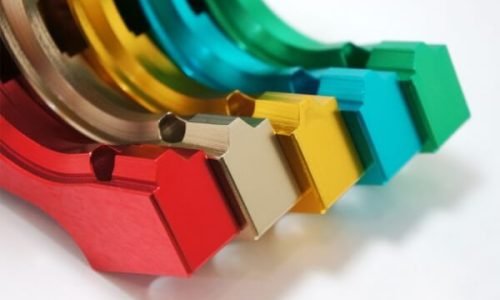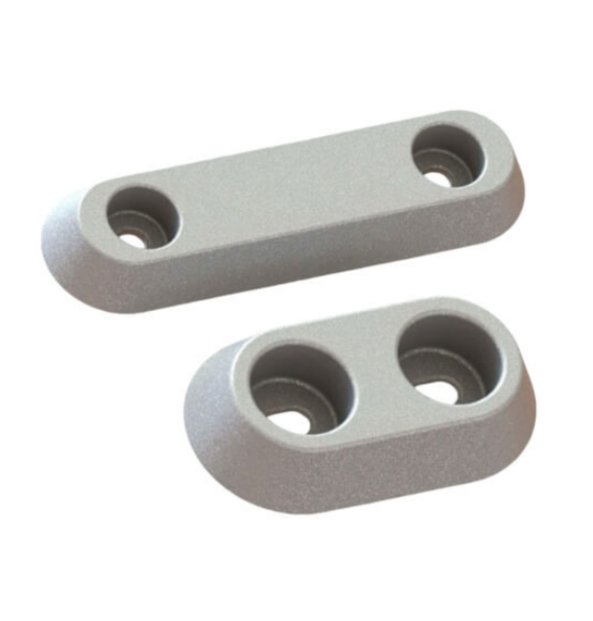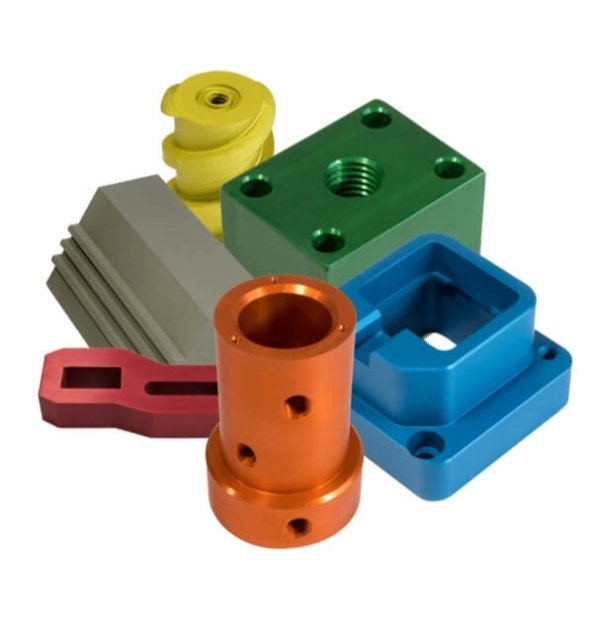Anodizing Guide: Processes, Applications, and Benefits
Anodizing is a specialized surface finishing process that enhances aluminum’s durability, corrosion resistance, and appearance.
This guide explores how anodizing works, the main techniques used in factories, and why it is a preferred choice across industries.
- Increases wear resistance and prolongs the lifespan of components.
- Offers a variety of colors and finishes that remain vibrant and fade-resistant.
- Provides non-conductive properties that are useful for certain electronic applications.
Introduction to Anodizing
What Does Anodizing Mean?
Anodizing is an electrochemical process that converts the metal surface into a decorative, durable, corrosion-resistant, anodic oxide finish. Aluminum is ideally suited to anodizing, although other nonferrous metals, such as magnesium and titanium, also can be anodized.
The anodic oxide structure originates from the aluminum substrate and is composed entirely of aluminum oxide. This aluminum oxide is not applied to the surface like paint or plating, but is fully integrated with the underlying aluminum substrate, so it cannot chip or peel.


Why Is Anodizing Important for Aluminum?
Anodizing is a critical process for aluminum because it enhances the natural oxide protective layer, providing superior surface properties. While aluminum naturally forms a thin oxide layer that protects it from corrosion, this layer is too thin to provide robust protection in demanding environments.
The anodizing process thickens and strengthens this inherent oxide layer, offering dramatically improved corrosion resistance, increased surface hardness, and better wear characteristics.
Applications of Anodized Aluminum
- Common Industries That Use Anodized Parts
Aerospace Industry
Anodized aluminum is extensively used in aircraft components due to its excellent strength-to-weight ratio and corrosion resistance.
Architecture and Construction
Building facades, window frames, and roofing systems benefit from anodizing’s durability and aesthetic appeal.
Automotive Sector
Both interior and exterior automotive parts utilize anodized aluminum for its combination of beauty and durability.
Consumer Electronics
Smartphones, laptops, and tablets often feature anodized aluminum cases for their premium look and feel.
- Everyday Products Made with Anodized Aluminum
Anodized aluminum is all around us in everyday products. From kitchen utensils and cookware to sporting goods and furniture, the applications are nearly endless. Flashlights, picture frames, door handles, and even many smartphones and laptops feature anodized aluminum components.
The process is particularly valued for consumer products because it creates a surface that is resistant to scratching, fading, and wear while offering a wide range of attractive colors and finishes.
The Anodizing Process Explained
- Step-by-Step Overview of How Anodizing Works
Cleaning
Parts are degreased and cleaned to remove oils, dirt, or residues. This ensures uniform oxide formation.
Etching
A controlled chemical treatment slightly roughens the surface, enhancing adhesion and uniformity.
Anodizing
Aluminum is immersed in an acid electrolyte bath, and an electric current causes the surface to form a thick oxide layer.
Coloring
The porous oxide layer can absorb dyes or be colored through electrolytic deposition for decorative or functional purposes.
Sealing
The anodized surface is sealed using hot water or chemical treatments to close pores, improving corrosion resistance and hardness.
Key Factors That Affect the Anodizing Outcome
Several critical factors influence the quality and characteristics of the anodized finish:
- Aluminum alloy composition
- Temperature of the electrolyte solution
- Concentration and type of acid used
- Voltage and current density applied
- Processing time in the anodizing bath
- Quality of pre-treatment and cleaning

Different Anodizing Techniques
| Technique | Electrolyte | Coating Thickness | Key Properties | Primary Applications |
|---|---|---|---|---|
| Chromic Acid (Type I) | Chromic Acid | 0.5 - 18 μm | Good corrosion resistance, minimal dimensional change | Aerospace components, adhesive bonding primer |
| Sulfuric Acid (Type II) | Sulfuric Acid | 1.8 - 25 μm | Excellent dye absorption, good wear resistance | Architectural, consumer products, decorative items |
| Hardcoat (Type III) | Sulfuric Acid (low temp) | 13 - 100 μm | Extreme hardness, excellent wear resistance | Military equipment, industrial parts, mechanical components |

Type 1 anodize uses chromic acid to produce a thin, opaque coating that provides good corrosion resistance with minimal part dimensional change. It's often used for aerospace applications where fatigue resistance is critical.
Chromic acid solution (3-10% concentration)
0.5 to 18 micrometers (0.00002 to 0.0007 inches)
Excellent corrosion resistance, good electrical insulation, minimal part size increase
Aerospace components, adhesive bonding primer, military specifications
Type 2 anodize is the most common method, using sulfuric acid to create a thicker coating that accepts dyes well. It offers excellent corrosion resistance and wear properties and is suitable for a wide range of applications.
Sulfuric acid solution (10-20% concentration)
1.8 to 25 micrometers (0.00007 to 0.001 inches)
Excellent dye absorption, good wear and corrosion resistance, electrical insulation
Architectural components, consumer products, decorative finishes, automotive parts


Type 3 anodize, or hard anodized, produces an extremely hard, thick, dense coating that provides superior wear and abrasion resistance. It's used for applications requiring extreme durability, such as military equipment and mechanical components.
Sulfuric acid solution (10-20% concentration) at low temperature (0-10°C)
13 to 100 micrometers (0.0005 to 0.004 inches)
Extreme surface hardness, excellent wear resistance, thermal insulation
Military equipment, industrial machinery parts, hydraulic components, pistons
Advantages of Aluminum Anodizing
Durability and Corrosion Resistance
Anodized aluminum offers exceptional durability and resistance to corrosion. The hard anodic oxide layer is integral to the metal substrate, making it highly resistant to chipping, peeling, and flaking. This makes it ideal for applications exposed to harsh environments.
Improved Aesthetic Appearance
Anodizing provides a aesthetically pleasing finish that is available in a wide range of colors. The color is not applied on the surface but is impregnated into the porous oxide layer, resulting in excellent color stability and resistance to fading from UV exposure.
Enhanced Surface Performance
Beyond aesthetics, anodizing improves several functional properties of aluminum. It increases surface hardness, making it more resistant to wear and abrasion. The anodized layer also has excellent thermal insulation properties and provides electrical insulation.
Challenges and Limitations of Anodizing
Limitations Compared with Other Surface Finishes
While anodizing offers numerous benefits, it does have some limitations. The process is primarily suitable for aluminum and a few other non-ferrous metals. It can be more expensive than some alternative finishes for certain applications, and color matching can be challenging between production batches.
Additionally, anodizing can cause dimensional changes to parts, which must be accounted for in the design phase. The process also requires careful handling of chemical baths and waste products to meet environmental regulations.
Factors That May Increase Costs
Several factors can impact the cost of anodizing, including:
- Part size and complexity
- Type of anodizing process (Type I, II, or III)
- Color requirements and dye specifications
- Quality standards and inspection requirements
- Volume of parts and production efficiency
- Environmental compliance and waste treatment
How Factories Perform Anodizing

Pre-Treatment: Cleaning and Surface Preparation
Proper pre-treatment is essential for achieving a high-quality anodized finish. This typically involves a multi-step process including degreasing to remove oils, alkaline cleaning to eliminate soils, and desmutting to remove alloying elements from the surface. Etching may also be performed to create a matte finish.

Anodizing Process: Electrolyte Bath and Current Application
The core anodizing process involves immersing the aluminum parts in an acid electrolyte bath and passing a direct electrical current through the solution. The aluminum part serves as the anode (positive electrode), while cathodes (negative electrodes) are typically made from lead or aluminum.

Coloring and Sealing of Anodized Layers
After anodizing, the porous surface can be colored using organic dyes, inorganic pigments, or electrolytic coloring methods. Following coloring, the parts are sealed to close the pores in the anodic coating. Sealing is typically done using hot water, steam, or nickel acetate solutions.

Quality Control and Final Inspection
Rigorous quality control measures are implemented throughout the anodizing process. Final inspection typically includes tests for coating thickness using eddy current or destructive methods, color consistency assessment, corrosion resistance testing via salt spray exposure, and adhesion tests.
FAQs About Anodizing
What does alu anodized mean?
Alu anodized refers to aluminum that has undergone the anodising process, which creates a durable, corrosion-resistant, and decorative oxide layer on the surface. This improves both the appearance and performance of aluminum parts.
What are the main types of anodizing?
The primary anodizing types are:
Type I (Chromic Acid Anodizing): Thin coating, mainly for corrosion resistance.
Type II (Sulfuric Acid Anodizing): Medium thickness, commonly used for color anodising.
Type III (Hard Anodizing): Thick, wear-resistant coating ideal for industrial and aerospace applications.
Why is black anodized aluminum commonly used?
Black anodized aluminum is popular because it combines excellent corrosion resistance with a sleek, modern appearance. It is widely used in electronics, automotive parts, and architectural applications due to its durability and aesthetic appeal.
What are the benefits of using anodized aluminum material?
Anodized aluminum material is lightweight, corrosion-resistant, scratch-resistant, and offers enhanced durability. It also accepts dye well, allowing for a wide range of colors while maintaining a metallic finish.
Can anodising be applied to materials other than aluminum?
Yes, while anodizing aluminum is the most common, other metals like anodized titanium are also popular. Titanium anodising creates vibrant colors without dyes, commonly used in medical devices, jewelry, and aerospace parts.
What are the typical applications of anodized aluminum material?
Anodized aluminum material is widely used in industries such as electronics, automotive, construction, and aerospace due to its corrosion resistance, lightweight nature, and ability to take on decorative finishes. Its versatility makes it ideal for both functional and aesthetic applications.
What is the difference between anodising and painting or plating?
Unlike painting or plating, anodising integrates the protective oxide layer into the surface of the aluminum itself, making it much more durable, resistant to peeling, and longer-lasting.
How do I choose between different types of surface finishes for my project?
Yes, damaged or worn alu anodized surfaces can often be stripped and re-anodised. However, the process may slightly alter the dimensions of precision parts, so it’s important to consult a professional before rework.
